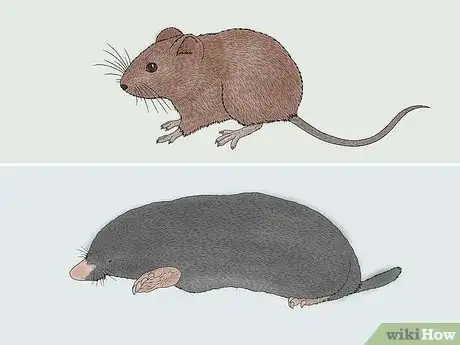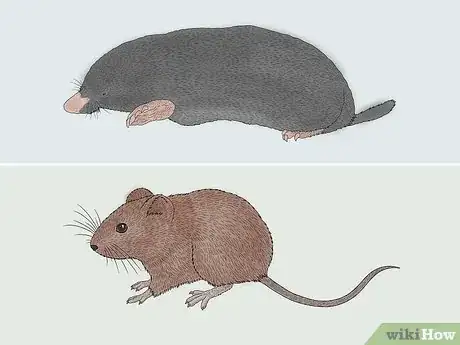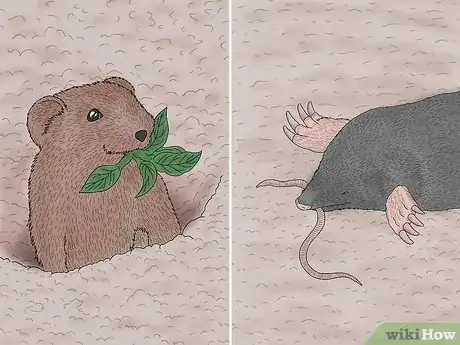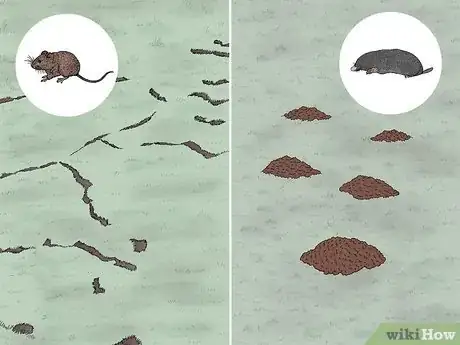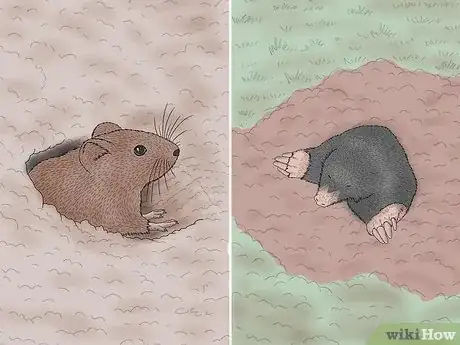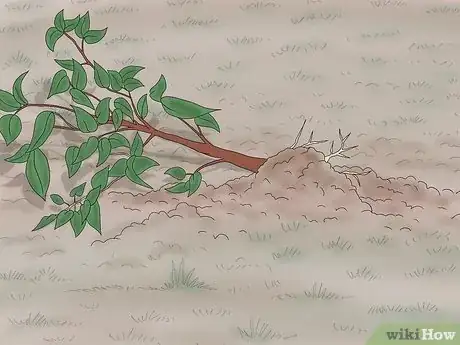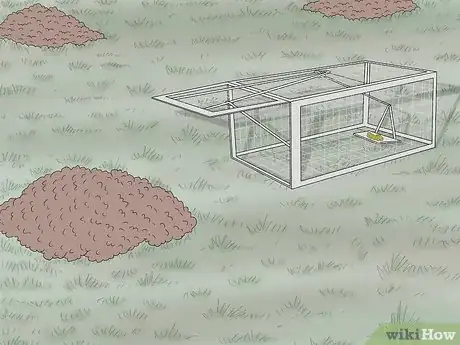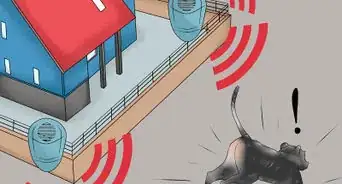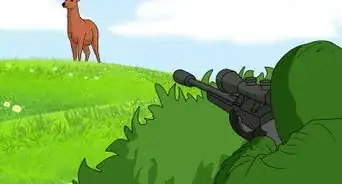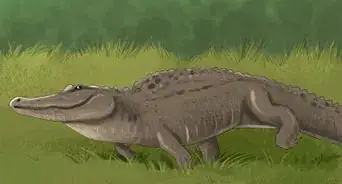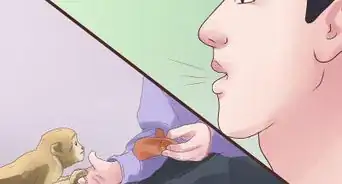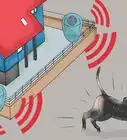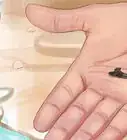This article was co-authored by wikiHow staff writer, Devin McSween. Devin McSween is a wikiHow Staff Writer. With a background in psychology, she has presented her research in social psychology at a variety of conferences and has contributed to several manuscripts for publication. At wikiHow, Devin combines her love of writing and research with the goal of bringing accessible information to wikiHow readers that will help them learn and grow. She earned her BS in Psychology from the College of Charleston.
There are 9 references cited in this article, which can be found at the bottom of the page.
Learn more...
It’s small, furry, and somehow causing a lot of damage in your yard. The culprit could be a vole or a mole, but how can you tell the difference? Luckily, there are key physical and behavioral differences between these animals that makes it easy to tell them apart. In this article, we’ll tell you how to determine whether a mole or vole has taken up residence in your yard. It’s important to tell the difference between these 2 animals so you can properly remove them from your lawn, which we’ll go over too.
Things You Should Know
- Voles are smaller with a mouse-like look while moles have a distinct, elongated snout and large hands.
- Voles create maze-like runways, mostly across the surface of your lawn, while moles dig tunnels and create volcano-like mounds.
- Voles are herbivores that chew through your garden and roots, killing your plants. Moles’ tunnels simply disturb your lawn and landscaping.
Steps
References
- ↑ https://currituck.ces.ncsu.edu/2020/05/mole-vs-vole/
- ↑ https://extension.psu.edu/identifying-moles-voles-and-shrews
- ↑ https://extension.psu.edu/identifying-moles-voles-and-shrews
- ↑ https://forestry.ca.uky.edu/extension/wildlife/wildlife-damage/moles
- ↑ https://extension.psu.edu/identifying-moles-voles-and-shrews
- ↑ https://kids.niehs.nih.gov/topics/natural-world/wildlife/animals/moles-voles-shrews
- ↑ https://forestry.ca.uky.edu/extension/wildlife/wildlife-damage/moles
- ↑ https://www.aces.edu/blog/topics/forestry-wildlife/controlling-damage-from-moles-and-voles/
- ↑ https://blogs.cornell.edu/nysipm/2015/02/03/the-difference-between-voles-and-moles/
- ↑ https://extension.oregonstate.edu/news/moles-voles-gophers-dig-garden
- ↑ https://www.aces.edu/blog/topics/forestry-wildlife/controlling-damage-from-moles-and-voles/
- ↑ https://www.canada.ca/en/health-canada/services/pest-control-tips/moles-voles.html
- ↑ https://extension.psu.edu/voles
- ↑ https://www.aces.edu/blog/topics/forestry-wildlife/controlling-damage-from-moles-and-voles/
